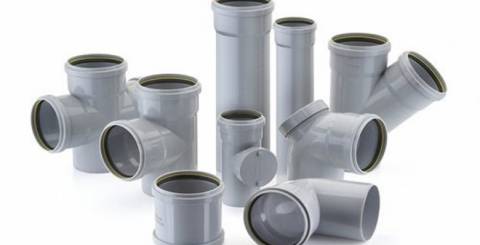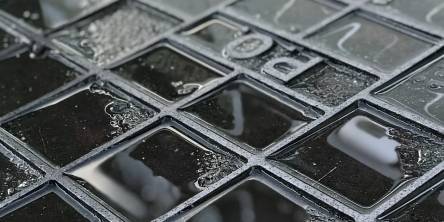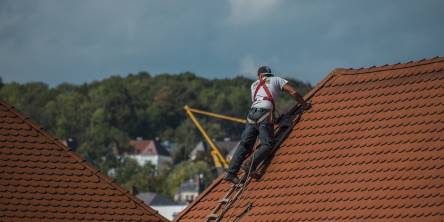Choosing the Right Sewage Pipe: Factors for Reliable Drainage

Sewage systems play a crucial role in maintaining public health and environmental integrity. A well-designed sewage pipe system ensures the efficient and safe disposal of wastewater and prevents contamination of water bodies and soil. When it comes to selecting the appropriate sewage pipe for your drainage needs, careful consideration of various factors is essential to ensure reliable and effective performance. This article delves into the key aspects to consider when choosing the right sewage pipe, with a focus on SWR pipe fittings, to ensure a dependable drainage system.
Material Durability and Compatibility
One of the primary factors to consider when selecting a sewage pipe is the material from which it is made. Different materials exhibit varying levels of durability and resistance to the harsh conditions that sewage systems often experience. Common materials used for sewage pipes include PVC, HDPE, cast iron, and clay.
PVC (polyvinyl chloride) pipes are widely used in sewage systems due to their exceptional durability and resistance to corrosion. These pipes are well-suited for both above-ground and underground installations. HDPE (high-density polyethylene) pipes are another popular choice, known for their flexibility and resistance to chemicals. Cast iron pipes, although less common today, are still used in some applications for their strength and fire resistance. Clay pipes, on the other hand, offer a classic option and are suitable for gravity-based systems.
It's crucial to ensure that the chosen pipe material is compatible with the type of wastewater and chemicals that will flow through it. For instance, some industrial or commercial applications may require pipes that can withstand more corrosive substances. By selecting a sewage pipe with the appropriate material, you can ensure the longevity and reliability of your drainage system.
Pipe Diameter and Capacity
The diameter of the sewage pipe is another critical factor that influences the efficiency of your drainage system. The size of the pipe determines the flow capacity and the volume of wastewater the system can handle. Undersized pipes can lead to frequent clogs and backups, resulting in disruptions and potential health hazards.
Calculating the optimal pipe diameter involves considering factors such as the expected volume of wastewater, the slope of the pipe, and the velocity of flow. It's advisable to consult with sewage system professionals or engineers to determine the correct pipe diameter for your specific needs. Choosing a pipe with the right diameter ensures smooth wastewater flow and minimizes the risk of blockages.
Installation and Maintenance
The installation process of sewage pipes significantly affects their long-term performance. Proper installation techniques are essential to prevent leaks, joint failures, and other issues that could compromise the system's reliability. Qualified and experienced contractors should be employed to ensure that the pipes are laid correctly, considering factors such as slope, alignment, and proper connections.
Regular maintenance is equally crucial to keep the sewage system functioning optimally. Neglecting maintenance can lead to gradual deterioration, blockages, and reduced drainage efficiency. Regular inspections, cleaning, and repair work should be scheduled to address any potential problems before they escalate. Well-maintained sewage pipes contribute to a dependable and trouble-free drainage system.
Environmental Impact
In today's environmentally conscious world, considering the ecological impact of sewage systems is paramount. The choice of sewage pipe materials can have varying effects on the environment, from production to disposal. PVC and HDPE pipes are known for their relatively lower environmental impact compared to traditional materials like cast iron.
Furthermore, modern sewage systems incorporate advanced technologies to treat wastewater before its release into the environment. Choosing a sewage pipe that aligns with these treatment processes can help minimize the ecological footprint of your drainage system. By making environmentally conscious choices, you contribute to the preservation of water quality and the overall health of ecosystems.
Cost-effectiveness
While it's essential to prioritize the quality and reliability of your sewage pipe, cost-effectiveness is also a factor that cannot be overlooked. The initial investment in high-quality materials and proper installation can yield substantial long-term savings by reducing maintenance and repair expenses. Cheaper alternatives might lead to frequent failures, increased downtime, and higher operational costs in the long run.
It's important to strike a balance between upfront costs and long-term benefits when choosing a sewage pipe. Conduct a cost analysis that takes into account factors such as material durability, maintenance requirements, and potential disruptions. This approach ensures that you make an informed decision that meets both your budgetary constraints and your drainage system's performance needs.
Conclusion
Selecting the right sewage pipe is a critical decision that significantly influences the reliability and effectiveness of your drainage system. Consider factors such as material durability, compatibility, pipe diameter, installation, maintenance, environmental impact, and cost-effectiveness. By carefully evaluating these aspects and seeking professional guidance when needed, you can design and implement a sewage system that ensures efficient and dependable wastewater disposal. SWR pipe fittings and related components play a pivotal role in this process, contributing to the overall success of your drainage infrastructure. Remember, a well-designed sewage system not only benefits your property but also contributes to the well-being of the community and the environment as a whole.
Similar Articles
Learn how a tidy home boosts mental health, reduces stress, improves productivity, and enhances well-being with simple, practical cleaning tips.
Have you ever harboured dreams of constructing your dream home filled with bespoke designs, carefully selected fittings and high-quality finishes? Have you ever fretted over the durability, aesthetics, and overall quality of your construction project? Are you constantly in search for the perfect balance between beauty and strength?
Cockroaches are one of the most common pests found in homes and businesses, and they are known for their resilience and ability to thrive in even the most unsanitary conditions. These pests can quickly infest kitchens, bathrooms, and other areas, spreading bacteria, allergens, and other harmful pathogens.
A well-maintained yard drainage system is key to preserving the beauty and health of any property. Poor drainage can lead to standing water, soil erosion, and even foundational damage to structures over time.
Keep your seaside home in top shape with these 4 expert tips! Learn about weatherproof materials, smart maintenance, and managing coastal challenges effectively.
Explore the future of roofing! Discover energy-efficient materials, smart systems, and sustainable designs reshaping modern home construction trends.
HVAC stands for heating, ventilation, and air conditioning. These all-in-one systems keep your home comfortable and improve air quality throughout a building. Often used in commercial buildings, HVAC units are increasingly used in residential buildings.
Safeguard your home after storms with timely roof repairs. Detect damage early, choose durable materials, and rely on a pro for lasting protection and peace of mind.
Learn how to balance a clean home and family life with these 6 practical tips to manage clutter, involve kids in chores, and set realistic expectations.









